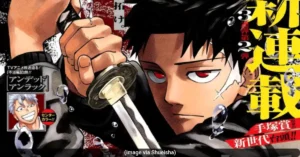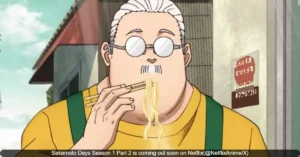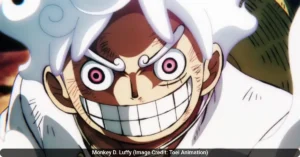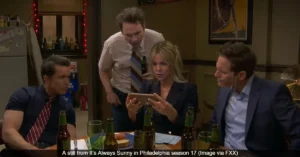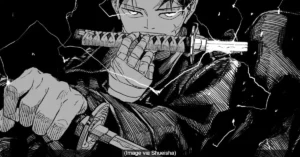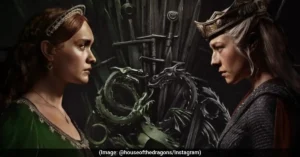Kagurabachi, a Shonen manga series by Takeru Hokazono, has quickly gained attention for its deep exploration of identity, revenge, and morality. Unlike many action-packed manga, it goes beyond surface-level conflicts to question what shapes a person’s sense of self. The story follows Chihiro Rokuhira, a young swordsmith’s son turned vengeful warrior, as he grapples with his past and purpose.
The manga’s unique take on identity sets it apart from other popular series like Naruto or Attack on Titan, which often focus on tribal or racial identity. Instead, Kagurabachi asks a more personal question: “Who are you?” This theme is woven into the journeys of its characters, especially Chihiro, who starts as a revenge-driven fighter but slowly shifts toward protecting others.
How Kagurabachi Handles Identity Differently
Most Shonen manga use identity as a backdrop for larger battles, but Kagurabachi makes it central to the story. Chihiro begins with a single goal—avenging his father’s murder—but soon realizes revenge won’t heal his pain. His growth comes from understanding that his identity isn’t just tied to his past but also to the choices he makes.
“I’m a sinner too. The first time I killed a person… I accepted that I’m a monster. The least I can do is refrain from causing pain to others and take you Hishaku bastards to hell with me.”
— Chihiro to Hiruhiko
This quote shows Chihiro’s self-awareness. He doesn’t see himself as a hero, just someone trying to do what he believes is right. His struggle mirrors real-life questions about whether people are defined by their worst actions or their efforts to change.
Another character, Hakuri Sazanami, also deals with identity. Born into a criminal family, he aids their crimes until love makes him question his role. Unlike Chihiro, Hakuri doesn’t dwell on guilt—he focuses on becoming better. This contrast highlights how people can redefine themselves.
The Anti-War Message and Its Impact on Identity
Kagurabachi is also an anti-war story. It shows that even “just” wars leave scars, and victory often comes at a cost. Kunishige, Chihiro’s father, crafted magical swords that ended a war, but their misuse later brings chaos. This cycle makes Chihiro question whether weapons—or people—can ever truly be neutral.
The manga doesn’t just criticize war; it examines how violence shapes identity. Characters like Genichi Sojo, who glorifies destruction, contrast with Chihiro, who learns to fight for protection. The story suggests that identity isn’t fixed—it changes with experiences and choices.
Why Fans Are Drawn to Kagurabachi’s Themes
Readers praise Kagurabachi for its emotional depth. Unlike typical revenge stories, it doesn’t glorify violence. Instead, it shows the consequences. Chihiro’s journey from anger to purpose feels real, making him relatable. The side characters, like Char Kyonagi and Hakuri, add layers by showing different ways people cope with trauma.
The manga’s art style also enhances its themes. Scars, weapons, and even clothing reflect characters’ struggles. Chihiro’s trench coat and facial scar symbolize his past, while his evolving fighting style shows his growth.
How Kagurabachi Compares to Other Manga
While series like Demon Slayer and Jujutsu Kaisen focus on external battles, Kagurabachi turns inward. It’s less about defeating villains and more about characters confronting themselves. This introspective approach has earned it a dedicated fanbase.
The manga’s government-backed Kamunabi and criminal Hishaku factions add political depth, but the real conflict is internal. Chihiro’s fight isn’t just against enemies—it’s against his own rage. This makes Kagurabachi stand out in the new generation of manga.
Also Read: Is Reversebachi a Real Spin-Off? The Truth About the Fan-Made Kagurabachi Alternate Universe
Credits: Kagurabachi Wiki, TV Tropes


